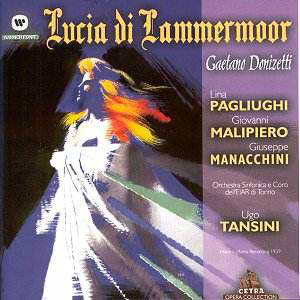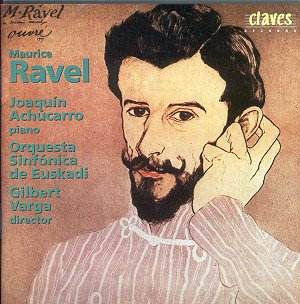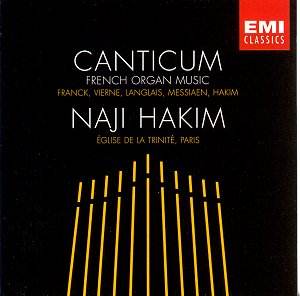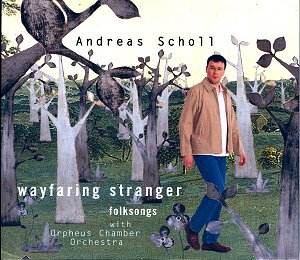 Composer: Gaetano Donizetti
Composer: Gaetano Donizetti
Works: Lucia di Lammermoor
Performers: Giuseppe Manacchini (Enrico Ashton, baritone), Lina Pagliughi (Lucia, soprano), Giovanni Malipiero (Edgardo, tenor), Muzio Giovagnoli (Bucklaw, tenor), Luciano Neroni (Raimondo, baritone), Orchestra Sinfonica dell’EIAR di Torino, Ugo Tansini (conductor)
Recording: Recorded in Turin, 17th -24th May 1939
Label: Warner Fonit 8573 87492-2 [2 CDs: 68’20” + 36’07”]
Gaetano Donizetti’s Lucia di Lammermoor remains a cornerstone of the bel canto repertoire, embodying the emotional turbulence and vocal acrobatics that define this period of operatic history. The opera, first performed in 1835, draws its narrative from Sir Walter Scott’s The Bride of Lammermoor, exploring themes of love, madness, and betrayal. The 1939 recording under review offers a fascinating window into the performance practices and vocal styles of the era, capturing a pivotal moment long before the current renaissance of Donizetti’s works.
The performance is anchored by Ugo Tansini, whose conducting exhibits a deft understanding of Donizetti’s idiomatic orchestration. Tansini’s approach brings clarity and buoyance to the score, skillfully navigating the rapid passages without sacrificing the emotional weight of the lyrical moments. The orchestral textures, particularly in the overture and the celebratory ensembles, are rendered with a vibrancy that belies the recording’s age. While the initial orchestral sound may seem tentative—an unfortunate side effect of the recording technology of the time—the overall balance between orchestra and singers is commendably managed, allowing the voices to resonate with clarity.
The vocal performances present a mixed landscape. Lina Pagliughi’s portrayal of Lucia is characterized by a bright, sweet timbre that is particularly effective in her upper range. Her coloratura passages are executed with precision, and the famous aria “Il pallore, funesto, orrendo” (Disc 1, track 13) showcases her technical prowess. However, her emotional delivery lacks the intensity that later interpreters, such as Maria Callas, would bring to the role. The contrast between Pagliughi’s innate lyricism and the more dramatic readings of contemporary sopranos underscores a stylistic divergence that merits consideration. Her vowels, reminiscent of the pre-Callas era, produce a shimmering quality that, while delightful, occasionally sacrifices emotional nuance.
Giovanni Malipiero, in the role of Edgardo, offers a more rounded interpretation than his counterpart, Giuseppe Manacchini (Enrico), whose singing is often criticized for its lack of expressiveness. Malipiero’s “Tu che a Dio spiegasti” is delivered with a commendable sense of phrasing and dynamic control, yet the performance overall can feel somewhat stiff, lacking the fluidity that one might hope for in the recitatives. Manacchini’s baritone does not convey the lyrical richness expected from Donizetti’s characters; rather, it often comes across as wooden, failing to engage with the underlying text’s emotional depths.
Luciano Neroni’s Raimondo presents an interesting case. His interpretation reflects a style that prioritizes sound over projection, suggesting a more lyrical approach that contrasts sharply with the more declamatory styles of his peers. The interplay of his singing reveals the complexities of vocal interpretation in a historical context, highlighting both the strengths and weaknesses of different schools of thought within operatic singing.
The sound quality, while hindered by the limitations of 1930s recording technology, surprises with its clarity. The slight patches of wow do not detract significantly from the overall listening experience, allowing the listener to appreciate the ensemble’s interplay. However, this recording inevitably invites comparison with more recent interpretations that benefit from advanced engineering and heightened emotional expressiveness.
The historical significance of this recording cannot be overstated. It serves as a testament to the performance norms of its time, revealing the stylistic choices that shaped the reception of Lucia di Lammermoor in the decades that followed. While it may not stand as a definitive version in the current catalog, the artistry of Tansini and Pagliughi, along with the insights offered by the other singers, provide an invaluable perspective on the evolution of operatic performance. The recording stands as a reflection of its time, both a reminder of past traditions and an invitation to explore how interpretations have evolved, shaping our understanding of this operatic masterpiece.



